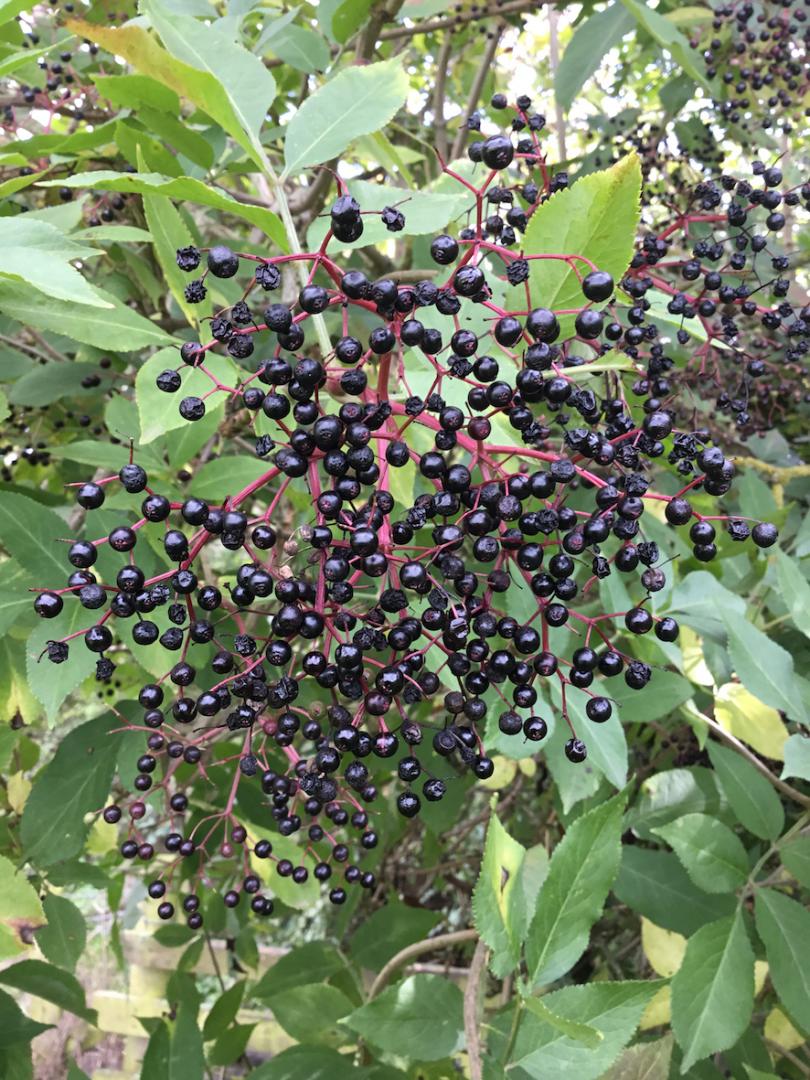Elder Sambucus nigra
ELDER is a shrub or small tree of the honeysuckle family that can grow up to 30 feet high.
It is found in woodland, scrub and, like nettles, it favours nitrogen-rich habitats like dung heaps or rabbit warrens. It is native, and common throughout the British Isles, except for in northern Scotland.
The mature wood has deeply furrowed bark, a corky texture and a pithy core. The new shoots are straight, vigorous and erect, and arise from the plant’s base. The leaves are on opposite sides of the stem, each bearing five to seven leaflets, and all with saw-like edges.
The shoots are pungent – some would even say foetid. But the flowers are honey-scented and arranged in a flat-topped inflorescence up to eight inches across, with each flower one eighth of an inch wide, coloured white to creamy white, and pollinated by small flies.
The berries that are found in late summer are almost always black, though rarely green, and a quarter of an inch across.
Birds eat and distribute the berries, which accounts for the wide distribution of young elder plants in gardens and also for the unwelcome purple splotches seen on many cars whose owners have parked under trees favoured by birds.
Although considered a weed, elder has many uses. The flowers can make a cordial and a kind of “champagne” .
Elderflower champagne used to be popular during haymaking as a cheap, refreshing drink (though any manner of labelling of this sort was dropped after a 1994 case brought by champagne growers who felt it demeaned their product). And the berries make a wine used medicinally to cure colds.
In medieval times, elder was used as hedging as it was so fast growing, producing almost instant fences which were also extremely rabbit resistant.
Until recently, many farmers took advantage of its pungent quality to repel flies around livestock. Some even made garlands of elder for their cattle to protect them from this annoyance.
The Romans used the berries as a hair dye. (Pan was said to have dyed himself with elder.)
As the root and heart of elder wood are both extremely hard, in fact as hard as ebony, they are useful for turning.
Interestingly, elder pith is the lightest solid known to man, and anyone who studied botany years ago will recall using it to secure plant specimens so that they could be cut very finely for studying the plant’s structure under a microscope.
Elder has always been popular among medics and mystics.
A preparation of the flowers is used as a skin cleanser known commercially as Eau de Sareau.
Elderberry wine is also known to relieve colds, chills and sore throats. Some mystics believed that elder cured warts, others that if you planted elder outside your house, it kept the devil away.
So, a useful nuisance.
Dr Richard Warren is a botanist from Barnard Castle
ADVERTISEMENT
Flora and Fauna: A useful nuisance
ADVERTISEMENT
ADVERTISEMENT
ADVERTISEMENT






